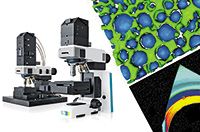The Extraction of Perfluorinated Alkyl Acids PFAAs in Drinking Water Using Automated Cartridge SPE
Special Issues
Perfluorinated chemicals (PFCs), also known as PFAAs, can be found in commercial and industrial uses such as firefighting foams, package material coatings, nonstick cookware, waterproofing, and stain-proof fabrics. PFCs are all manmade and have unique properties such as repelling water, oil, and heat. They are very difficult to break down and persist in the environment. Small amounts of PFCs can dissolve in water and is a cause for concern for human exposure, especially in drinking water sources such as large public water systems and private wells. A recent health advisory has been issued by U.S. Environmental Protection Agency (EPA). Water utilities should notify customers if greater than 70 ppt (0.07 µg/L) PFOS or PFOA or a total for the two combined are detected in the water supply.
The United States is not the only country concerned about exposure to PFCs. In Europe, the twelfth meeting of the United Nations Persistent Organic Pollutants Review Committee was held in Rome in September 2016 to move the consideration of PFCs forward for further regulatory consideration. Rules developed under this framework will have global impact. This work will demonstrate the capability of the SmartPrep(r) Cartridge Extraction II System for the extraction of six PFCs in compliance with US EPA 537 or ISO 25101:2009 (1).
Solid phase extraction (SPE) is used to remove and concentrate the PFCs from water samples. In U.S. EPA method 537, a 0.5 g, 6-mL SPE cartridge containing styrene divinylbenzene (SDVB) sorbent phase is specified. The analysis is done using HPLC–MS/MS for a sensitive detection step.
After demonstrating that the system does not contribute background to the extraction step, the Method Detection Limits (MDL) were determined from seven samples run on the SmartPrep over a three day period. The MDL values for this method with this sample size and equipment are extremely low (Table I). They will be able to measure water samples at the U.S. Health Advisory level of 0.07 µg/L for PFOS or PFOA with MDLs of 0.004 and 0.002 respectively. The limit of quantitation (LOQ) is 0.013 µg/L for PFOS and 0.0076 µg/L for PFOA, which is acceptable for very low level determinations.

PFC compounds are becoming an increasingly important concern as research into health effects uncovers other related illnesses. As countries around the world move to regulate exposure through drinking water, reliable, and accurate measurement methods become critical.
Methods US EPA 537 and ISO 25101:2009 specify extraction and concentration with SPE and analysis using HPLC–MS/MS. Automation of the cartridge SPE step is important to ensure the best reproducibility with the least chance of contamination. It also ensures the efficient use of technician time through walk-away operation.
References
The Extraction of Perfluorinated Alkyl Acids (PFAAs) in Drinking Water Using Automated Cartridge SPE, AN1131610_01, available from www.horizontechinc.com .

Horizon Technology, Inc.
16 Northwestern Drive, Salem, NH 03079
tel. (603) 893-3663
Website: www.horizontechinc.com

The Benefits of Custom Bonded Silica
April 1st 2025Not all chromatography resins are created equal. Off-the-shelf chromatography resins might not always meet the rigorous purification requirements of biopharmaceutical manufacturing. Custom bonded silica from Grace can address a wide range of separation challenges, leading to real performance improvements. Discover more about the latest innovations in chromatography silica from Grace, including VYDAC® and DAVISIL®.
5 Things to Consider When Selecting a Chromatography Silica
April 1st 2025Particularly in the pharmaceutical industry, drug purity isn’t just a goal – it’s essential for achieving safety, stability and efficacy. However, purification is easier said than done, especially with challenging molecules like DNA and RNA “oligonucleotides,” due in large part to their diversity and the range of impurities that can be generated during production. Enter DAVISIL® chromatographic silica, with a wide range of pore diameters and particle sizes to meet your specific application, performance and sustainability requirements. Before you choose the chromatography resin for your next purification application, take a look at these 5 considerations.
Automating Protein Purification: Efficiency, Yield, and Reproducibility
March 27th 2025Recent advancements in automated protein purification stress the importance of efficiency, scalability, and yield consistency. This eBook compares different purification platforms, highlighting their impact on downstream applications and demonstrating how automation enhances throughput and process control.
MilliporeSigma: Ultrapure Water for Sensitive LC-MS Analysis of Pesticides
March 25th 2025The aim of the study was to illustrate the efficiency of Milli-Q® water purification systems in eliminating pesticides from tap water, thereby producing and delivering reliable and consistent-quality ultrapure water suitable for pesticides analysis














